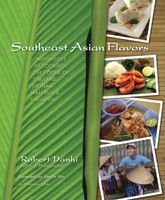Label
All
0
Clear all filters
Prue Leith's latest book is now on ckbk. Get 25% off ckbk Membership
Melting Pot at the Crossroads of Asia
Appears in
By Robert Danhi
Published 2008
Malaysia and Singapore each possesses a culture that is uniquely its own; however, the foods from these neighboring culinary destinations are quite similar. This chapter will give insight into each culture separately, yet address their Culinary Identity™ together. Both made up of primarily Chinese, Malay, Nonya, and Indian ethnicities, these vibrant culinary cultures are a distinctive microcosm located in the heart of Southeast Asia.
Fortunately for travelers, English is spoken much more commonly in Malaysia and Singapore than in Thailand and Vietnam. English is Singapore’s national language. Singapore’s population is a colorful mixture of 74 percent Chinese, 14 percent Malay, and 8 percent Indian. The remaining residents include other races such as Eurasian, Indonesian, Filipino, and many expatriates. Malaysian ethnic diversity is more evenly distributed, with three major ethnic groups making up the majority of the population—Malays, 53 percent; Chinese, 32 percent; and the Indians, 10 percent. The remaining 5 percent are made up of the Orang Asli, or Original People, and hundreds of other tribes living mainly in East Malaysia.
In this section
Part of
Advertisement
Advertisement
The licensor does not allow printing of this title


